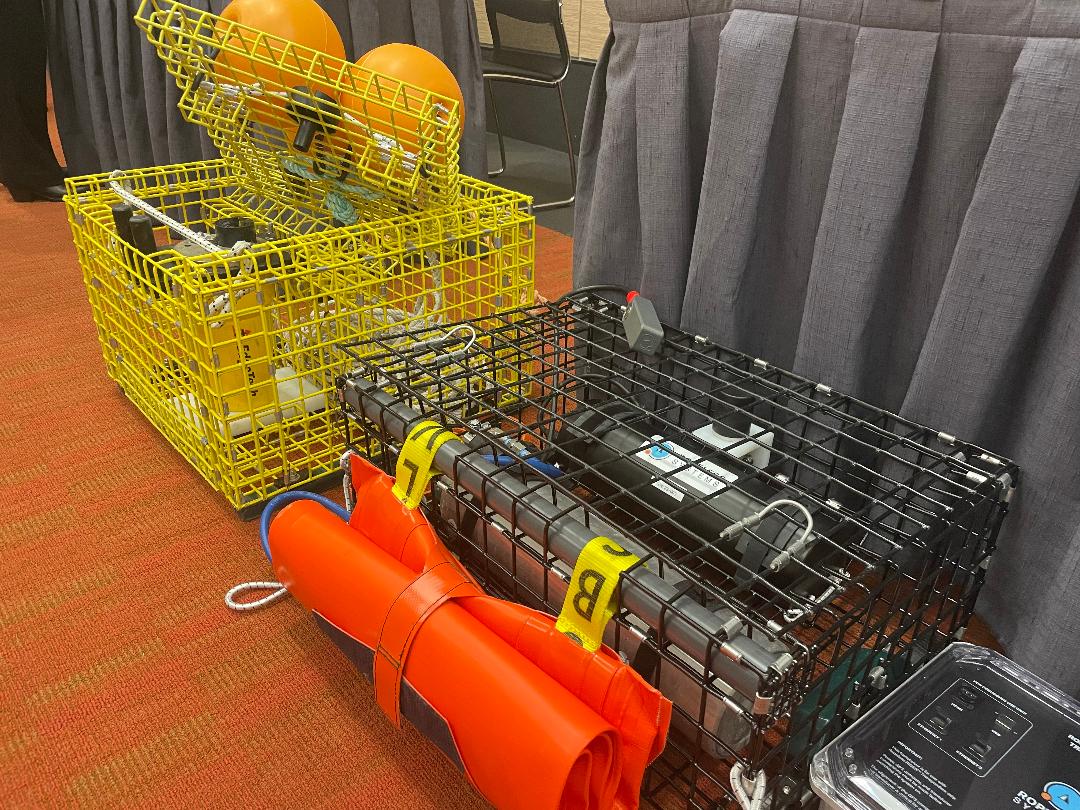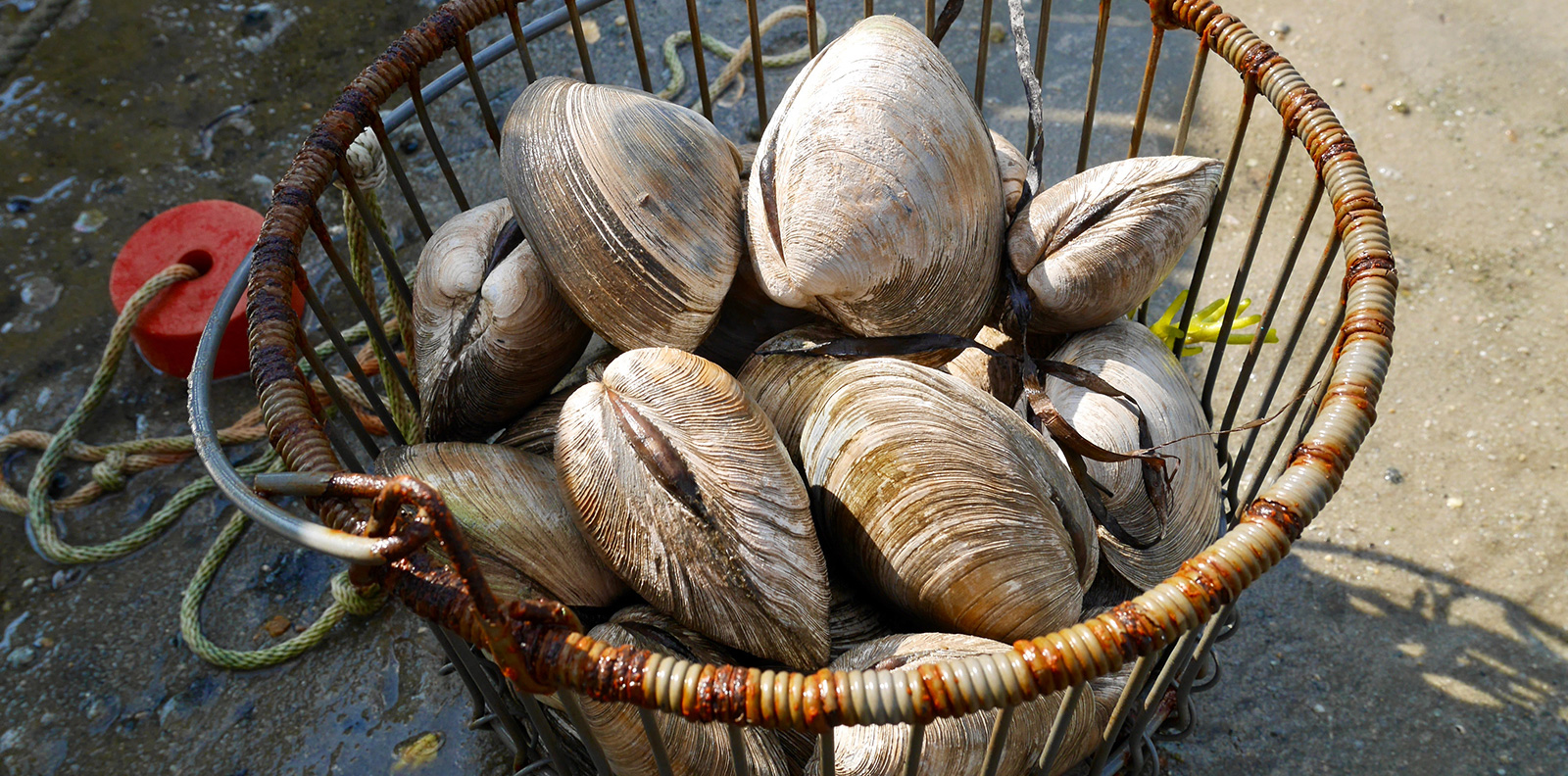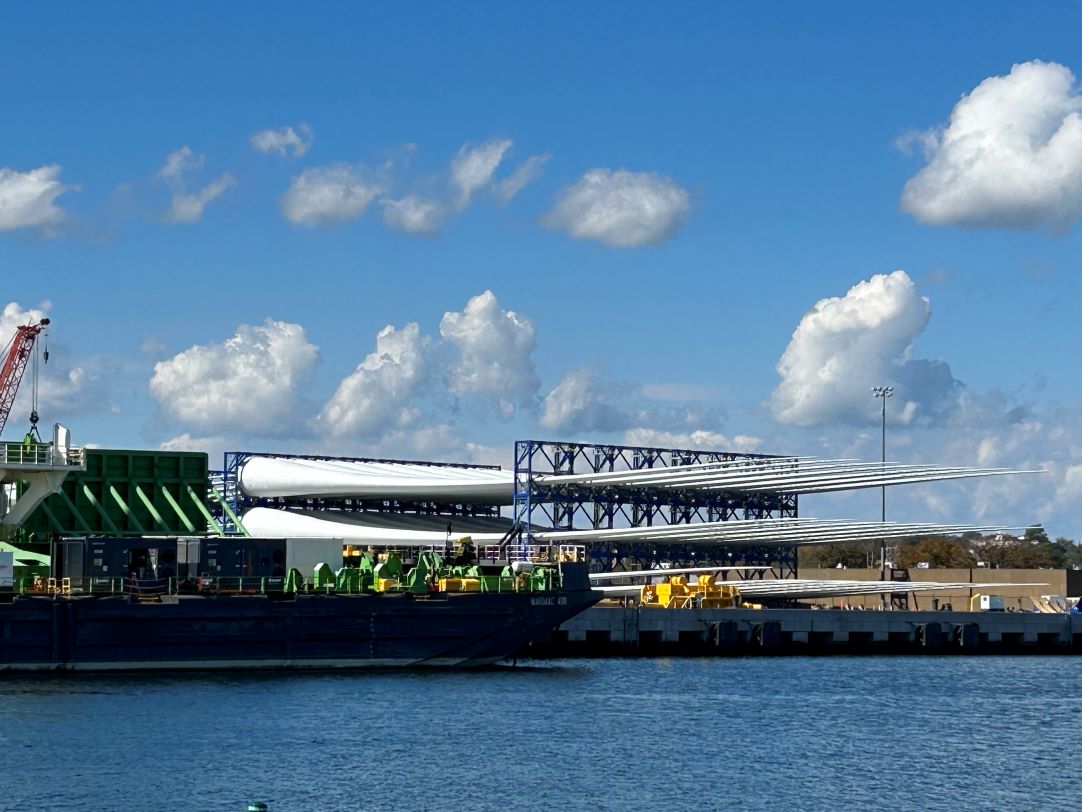Humble, Hard-Working Quahog Keeps Rhode Island Running
Putting a price on Ocean State shellfish and crafting a plan to better manage this vital resource
November 18, 2013
WARWICK, R.I. — The man largely responsible for introducing Rhode Island to oyster aquaculture affectionately refers to these bivalves as “squishy critters that live between two ashtrays.” Despite his playful manner in describing these mollusks with rough irregular shells, Bob Rheault hardly underestimates their importance:
“Oysters were critical in the development of our species. They’re a high-protein source of food.”
For the first time in the 12-year history of the respected Ronald C. Baird Sea Grant Science Symposium, shellfish were the topic of discussion. It was only fitting that the witty, entertaining and informative Rheault was the conference’s first presenter. Nearly three decades ago, he started Moonstone Oysters and founded the Ocean State Aquaculture Association. Now, after 27 years of oyster farming, the executive director of the East Coast Shellfish Growers Association spends his time advocating for shellfish farmers.
Rheault made a persuasive case for the importance of shellfish in general and oysters in particular — although since the two-day conference was attended by many shellfish farmers and harvesters, it didn’t take much to win the crowd.
He noted that the farming and harvesting of shellfish doesn’t require antibiotics and fertilizers. He referred to them as a healthy “super food,” and called bivalves the “vacuum cleaners of our oceans.”
“We’re spending hundreds of millions upgrading stormwater systems, but shellfish are very efficient at taking nitrogen out of the water,” Rheault said. “Oysters and mussels are critical for healthy waters.”
In fact, the shellfish that inhabit Rhode Island waters are part of the Ocean State’s social and cultural fabric, and are integral pieces of a marine ecosystem that provides economic, employment, recreational and environmental benefits.
The Nov. 14-15 symposium at the Radisson in Warwick wasn’t really about debating the merits of shellfish. Besides Narragansett Bay itself, shellfish are arguably Rhode Island’s most valuable resource. Like the bay’s many splendid beaches, the state’s tasty quahogs, oysters and clams attract tourists. Clamming, as much as sunbathing, is a local summertime ritual.
And like the Narragansett Bay Commission’s new combined sewer overflow (CSO) tunnel beneath Providence, oysters and mussels help keep the Ocean State’s invaluable economic engine running clean.
Last week’s conference was about how best to manage and protect this precious resource. It was about discussing the current and the potential future value — both economic and environmental — of local shellfish.
“We want Rhode Island to have the best managed shellfish resource in the nation,” Rhode Island Sea Grant director Dennis Nixon said.
Shellfish management
Managing the state’s shellfish resource isn’t a one-person job. The conference, titled “The Future of Shellfish in Rhode Island,” was a continuation of work started earlier this year by Rhode Island Sea Grant, the Coastal Resources Management Council (CRMC) and the state Department of Environmental Management (DEM).
Despite the obvious economic and environmental benefits provided by the state’s shellfish industry, it has long been, for the most part, operating as a collection of individual parts.
For many involved, it’s regrettable but understandable that it took all the various stakeholders — shellfish harvesters and farmers, scientists, policymakers and consumers — such a long time to be properly introduced.
“We have a resource that is valuable but overlooked and not celebrated,” DEM director Janet Coit said. “This important resource needs to be managed. We need to set actions that safeguard habitat and improve the regulatory process, which hasn’t always been the best for everyone involved.”
Evaluating the issues, dealing with controversial topics and balancing uses won’t be easy. For starters, DEM regulates the state’s wild harvest of shellfish, and the CRMC regulates the industry’s aquaculture sector. Hello, bureaucratic red tape.
To get a better handle on the state’s shellfish industry and to make sure it remains sustainable, the aforementioned agencies have invested more than a million dollars and teamed up with an array of individuals and organizations to develop the Rhode Island Shellfish Management Plan. This two-year project, which began in January 2013, will examine a range of issues related to all things shellfish.
In fact, this newly embraced working-together approach has been habit forming. Quahoggers are collaborating with scientists to resolve some of the doubts about the biology of the resource. A cooperative study funded by the Southern New England Collaborative Research Initiative enrolls commercial quahoggers to pull bullrakes alongside the hydraulic clam dredge utilized by DEM to measure the density of quahogs on the bottom — a measurement that is then used to inform stock assessment calculations.
Those crafting the state’s first Shellfish Management Plan (SMP) envision the document eventually providing comprehensive policy guidance regarding management and protection of shellfish in Rhode Island’s marine waters. Its creation is designed to engage stakeholders in identifying practices to restore shellfish resources and enhance the economic health of the industry. Project leaders are working with the wild harvest, aquaculture and restoration communities to define priority issues.
The SMP will address gastropods and bivalves, mainly quahogs, bay scallops, whelks, oysters, soft shell clams and blue mussels.
“The value of our shellfish industry is priceless in many ways,” Rep. Art Handy, D-Cranston, said. “People have been digging up quahogs for generations. It’s provided great memories for a lot of people.”
Creating a plan
In hopes that future generations will experience the satisfaction of digging up a bucket full of future steamers and get to enjoy the “Rhode Island Oyster Sampler” at the Matunuck Oyster Bar in South Kingstown with friends, the development of the SMP will undoubtedly cause some tension, spark some heated debate and — the plan’s crafters hope — will ultimately lead to a plan that keeps the local shellfish industry happy and healthy and the resource sustained.
It’s been less than a year since the SMP project commenced, but it’s readily apparent a lot of concerns and questions need to be considered, especially since many of the issues cut across both commercial and recreational harvest and through restoration efforts.
For example, should aquaculture be recognized as agriculture to clarify ownership and rights to harvest? What does Rhode Island gain in terms of economic value by restoring shellfish populations? How will restoration success be measured?
There have been calls to clarify existing regulations and improve communication among regulators. Concerns have arisen with regard to water quality and closed-water regulations, differences between ponds and offshore space for both aquaculture and wild harvest, user conflicts, genetic diversity of stock and disease resistance, ecological and economic impacts of aquaculture, and changes caused by climate change.
Other issues mentioned include the declining number of shellfishermen, regulations that prevent shellfishers from directly selling their product to consumers, and inadequate stock assessments.
“We recognize the need to work together,” said Azure Cygler, a fisheries and aquaculture extension specialist at Rhode Island Sea Grant. “We need to embrace possibilities and what might work because we need to create an industry that endures.”
Among the methods being discussed to improve shellfish sustainability are harvest controls, minimum sizes and stock enhancement.
“Mankind is an efficient predator and shellfish aren’t good at escaping,” Rheault said.
Many benefits
Whether shellfishermen are growing mollusks in ponds or pulling wild ones from local waters, they are managing a resource that provides many services beyond satisfying millions of taste buds every summer.
The Ocean State’s shellfish resource provides many cultural, economical and environmental benefits.
Filter-feeding shellfish improve water quality. A single wild oyster, for example, can clear microscopic particles from about 15 gallons of seawater daily. A small oyster farm can clean as much as 100 million gallons of water a day. All this filtration removes problematic sediments and phytoplankton and their associated nutrients. Shellfish feeding stimulates denitrification of waters polluted by nitrogen-rich fertilizers and septic system/cesspool seepage.
Shellfish reefs provide habitat for fish, especially fin fish, and improve species diversity and abundance. Shellfish habitat also acts as green infrastructure to help slow storm surge and protect shoreline development from Mother Nature.
The SMP hopes to take all the services provided by Rhode Island’s shellfish and place a value on it. For example, what does the management of this resource mean to recreational and commercial fishing? How do oyster reefs compare to riprap when it comes to shoreline stabilization?
It’s a complex equation that at the moment lacks good data. The plan must address food production goals, ecosystem goals and industry goals — goals that aren’t mutually exclusive.
Industry trends
The number of shellfishermen is declining. (R.I. Sea Grant)For the past century, the state’s shellfish fishery has fluctuated, featuring periods of abundance and profitability interrupted by periods of low yields and financial struggle.
Among Rhode Island’s diverse collection of shellfish, the quahog is the most economically important resource harvested from Narragansett Bay. In fact, Ocean State quahogs once supported the largest outboard-motor fishing fleet in the world. But the price of quahogs hasn’t changed much over the years, making it increasingly difficult for quahoggers to stay in business. This flat price also offers little encouragement for the next generation to invest in the industry.
Shellfishermen involved with the SMP have called for research to better understand the intricacies of the bay’s quahog population. Dale Leavitt, associate professor of marine and natural sciences at Roger Williams University, is leading a project funded by the Commercial Fisheries Research Foundation that is looking into local quahog population dynamics.
This ongoing research is using computer models to show how quahog larvae are being pushed around by the hydrodynamics of Narragansett Bay during their first few weeks of life, according to Leavitt.
Wild harvesters are also “competing” with shellfish farmers. Global aquaculture production is growing, and nearly 50 percent of seafood consumed worldwide is now farmed. The U.S. aquaculture industry produces $1 billion annually, which is less than 5 percent of the seafood consumed here.
In Rhode Island, the state’s aquaculture industry, which is largely oysters, is approaching $3 million in annual sales. In fact, this sector of the local shellfish industry is one of the few growth industries in the state, growing by about 15 percent annually during the past decade.
Last year, the number of farms in Rhode Island increased from 43 to 50, and oysters remained the top aquaculture product, with 4,303,886 sold for consumption, according to the CRMC’s 2012 report.
Studies have shown that, done properly, shellfish aquaculture is a sustainable method of food production that provides important ecosystem services, such as those already mentioned. The practice can also help improve wild harvests.
Regardless of whether you are harvesting or farming shellfish, the challenges are the same, Rheault said. “We are united by the same challenges like weather, disease, predators, climate change, dock space, cheap imports and the fact our customers can’t open our product,” he said. “We both need to invest in research.”
Like the state’s Ocean Special Area Management Plan (Ocean SAMP), the SMP is being designed to address an assortment of issues that will advance the understanding of this important resource and strengthen a critical industry.
“We have to understand the system to manage it and achieve the proper balance,” CRMC director Grover Fugate said. “We have to balance the uses while protecting the resource. We need to develop a better management regime, and because of climate change we will always be adjusting this regime. Costal storms and ocean acidification are just some of the concerns we need to think about and plan for.”
Categories
Join the Discussion
View CommentsRelated Stories
Your support keeps our reporters on the environmental beat.
Reader support is at the core of our nonprofit news model. Together, we can keep the environment in the headlines.
We use cookies to improve your experience and deliver personalized content. View Cookie Settings



